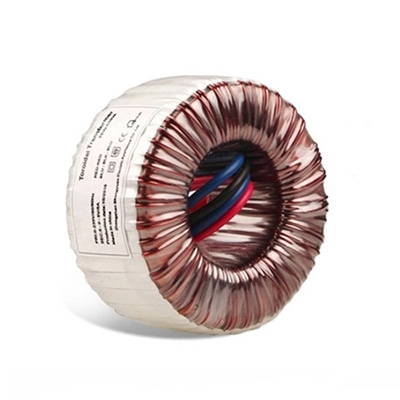How do You Test a Toroidal Transformer?
Toroidal transformers are widely used in many fields, such as communications, medical equipment, automation control, etc. To ensure its performance and reliability in actual use, it is crucial to test the toroidal transformer. Below are some common testing and verification methods.
What needs to be tested for toroidal transformer?
Data analysis: Analyze the working data of the toroidal transformer, such as voltage, current, power, etc., to evaluate its performance. This data can help understand the transformer's efficiency, stability, and whether there are problems such as overheating.
Life Testing: Verify the life and reliability of toroidal transformers by running for long periods or simulating operation under accelerated conditions. This approach helps identify potential faults and problems.
Functional verification: According to the application requirements of the toroidal transformer, verify its various functions, such as power output, signal transmission, etc. Ensure that the transformer can meet the expected functional requirements in actual use.
 Environmental adaptability test: Place the toroidal transformer under different environmental conditions such as high temperature, low temperature, high humidity, dryness, etc. to observe whether its performance and reliability are affected. This helps evaluate the operational stability and safety of the transformer under different environmental conditions.
Environmental adaptability test: Place the toroidal transformer under different environmental conditions such as high temperature, low temperature, high humidity, dryness, etc. to observe whether its performance and reliability are affected. This helps evaluate the operational stability and safety of the transformer under different environmental conditions.
Compatibility testing: For toroidal transformers with specific application requirements, such as those used in medical equipment, aerospace, and other fields, specific compatibility testing is required. These tests are designed to ensure the compatibility of the transformer with related equipment or systems to avoid incompatibility or mutual interference during use.
Appearance and physical inspection: Inspect the appearance and physical condition of the toroidal transformer, such as whether there is damage to the appearance, whether the color changes, whether there are cracks, etc. These cosmetic changes may reflect the internal condition of the transformer.
Maintenance and repair records: Check the maintenance and repair records of the toroidal transformer to understand its historical condition and maintenance status. This helps assess the reliability of the transformer and determine whether preventive maintenance is needed.
Electrical performance testing: Test electrical performance parameters such as coil resistance, insulation resistance, and withstand voltage to evaluate whether the electrical performance of the transformer meets the design requirements.
Mechanical performance testing: Conduct strength testing on the mechanical structure of the transformer to ensure that it can withstand expected mechanical stress during transportation, installation, and use.
Electromagnetic compatibility test: Test whether the electromagnetic interference generated by the transformer during operation complies with relevant standards and regulations, and the transformer's resistance to external electromagnetic interference.
By combining the above methods, the performance and reliability of the toroidal transformer can be comprehensively evaluated. These evaluation results can provide a basis for equipment selection, use, and maintenance, ensuring that the transformer can operate safely and reliably in actual applications. At the same time, timely maintenance and preventive measures can also improve the life and reliability of the transformer.
Things to notes when testing the toroidal transformer
Ensure electrical performance
Testing the electrical performance of a toroidal transformer is key to ensuring its normal and stable operation. By testing parameters such as coil resistance, insulation resistance, and withstand voltage, you can verify whether the electrical performance of the transformer meets the design requirements. These tests can ensure that the transformer operates normally under specified voltage and current conditions and avoid failures or safety hazards caused by electrical performance that does not meet standards.
Discover potential problems
By testing toroidal transformers, potential problems and faults can be discovered in time. Some potential defects or hidden dangers may be difficult to detect through appearance or simple inspection, but may gradually worsen in actual use, leading to equipment failure or safety accidents. Through comprehensive testing of the transformer, these problems can be discovered in time, and corresponding measures can be taken to repair or replace them to avoid potential risks.
Improve operational stability
Testing a toroidal transformer helps improve its operational stability. In actual use, the transformer may be affected by various external factors, such as voltage fluctuations, ambient temperature changes, etc. By testing the transformer, we can understand its performance under various conditions and take appropriate measures to optimize and adjust it and improve its operational stability. This helps reduce the probability of failure and improves equipment reliability and stability.
Verify product quality
Testing toroidal transformers is a necessary means to verify their product quality. Although the toroidal transformers undergo multiple quality checks during production, they still need to be tested to verify their final performance and reliability. The test results can be used as the basis for product quality assessment and provide a reference for product improvement and optimization. At the same time, testing also helps to establish product quality standards and specifications and improve the overall quality level of the product.

